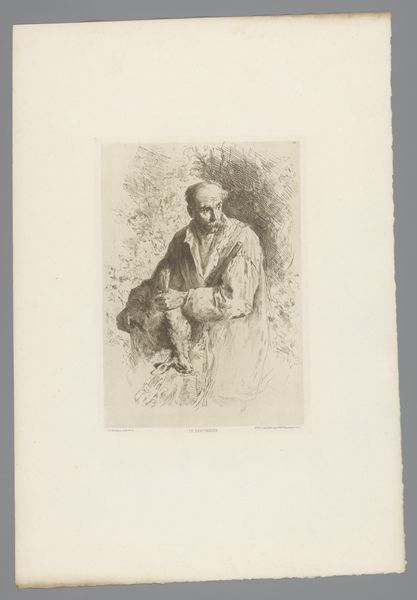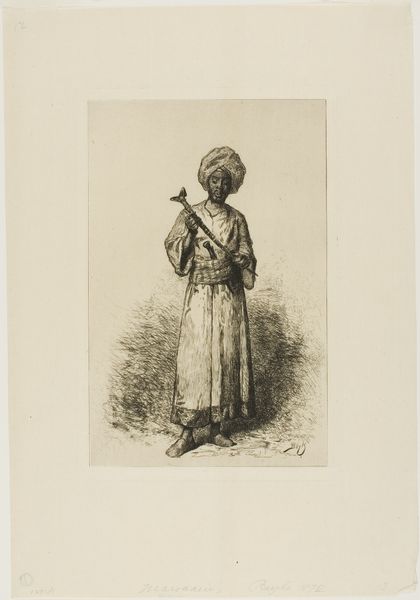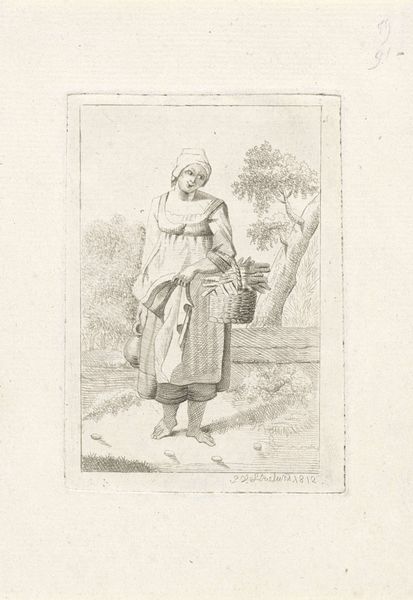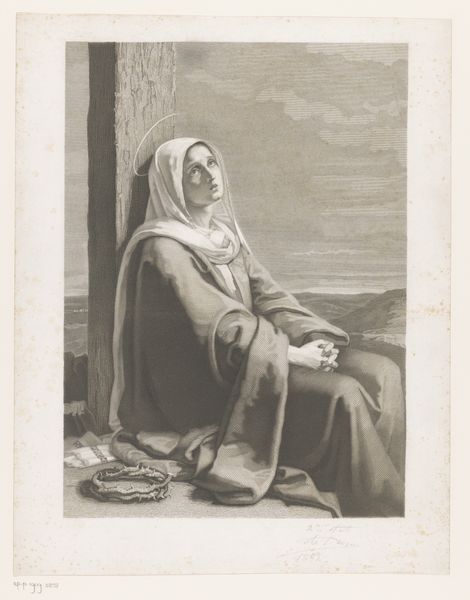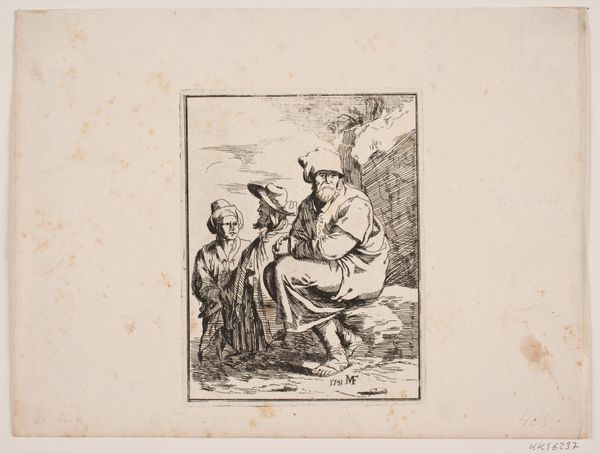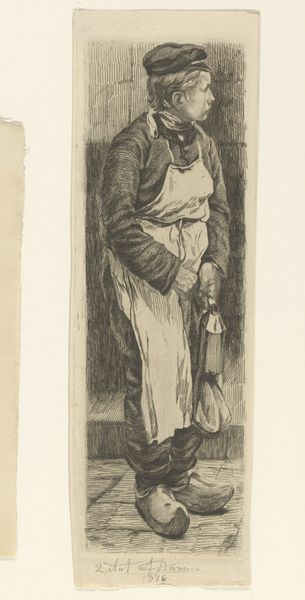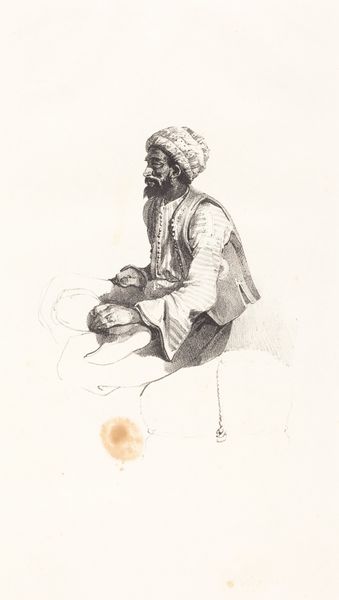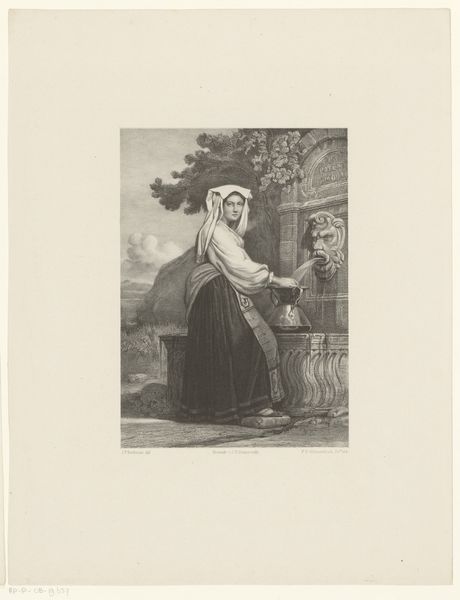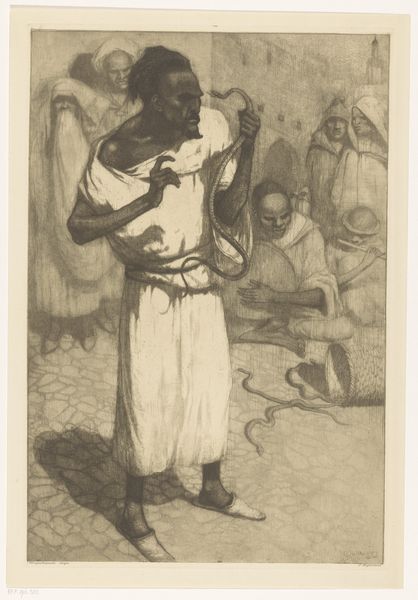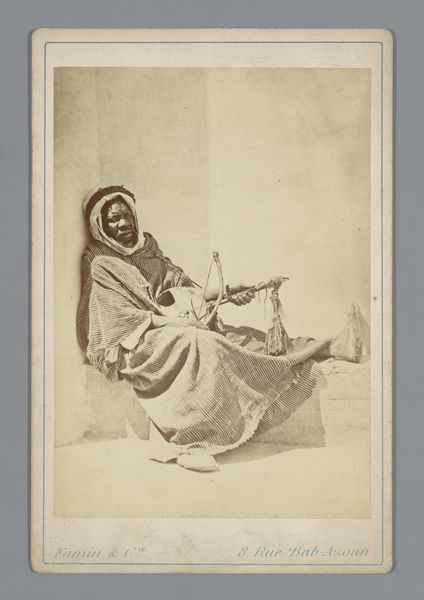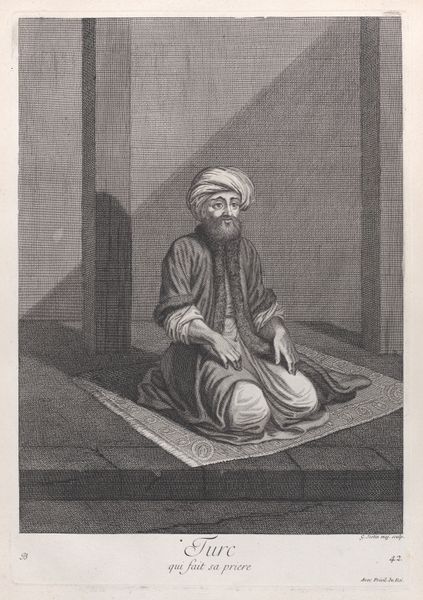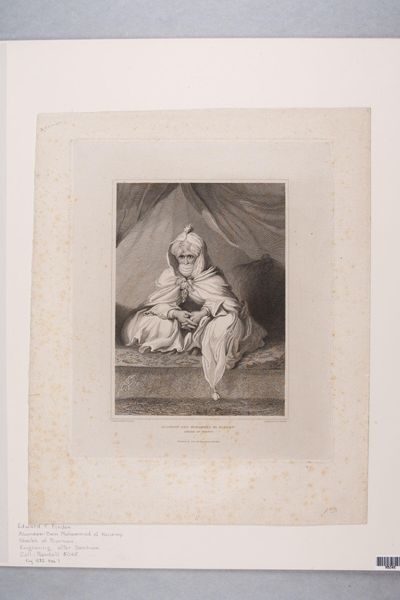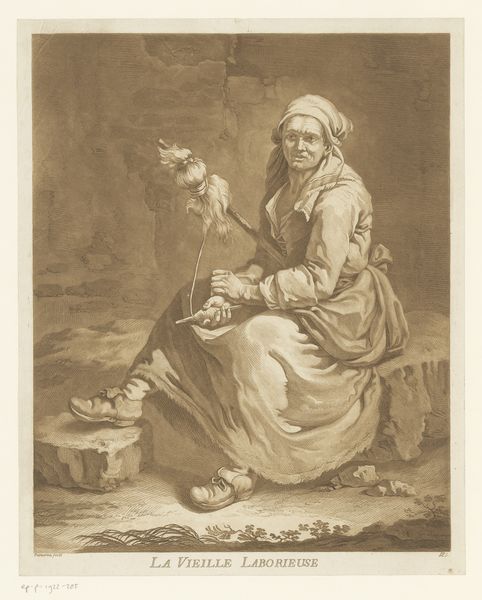
Aaron and Tamora (Shakespeare, Titus Andronicus, Act 2, Scene 3) 1825 - 1840
drawing, print, engraving
drawing
narrative-art
pencil sketch
figuration
pencil drawing
romanticism
history-painting
engraving
Dimensions Sheet: 3 7/16 × 2 9/16 in. (8.8 × 6.5 cm)
Curator: This engraving by Charles Heath the Elder, sometime between 1825 and 1840, is titled *Aaron and Tamora*. It illustrates a scene from Shakespeare’s *Titus Andronicus*, Act 2, Scene 3. Editor: What strikes me immediately is the intense physicality. The embrace, the lean, it's almost suffocatingly intimate, yet framed by the harsh textures of the landscape—the density of the forest really contrasts with their human drama. Curator: Yes, Heath masterfully utilizes chiaroscuro, playing with light and shadow to intensify the emotional weight of the scene. The characters are bathed in light, highlighting their forms, while the surrounding forest plunges into darkness, creating a palpable sense of unease and confinement. It echoes the play's themes of revenge, betrayal, and moral decay, reflecting a Romantic sensibility. Editor: And the meticulous detail evident in the texture of the clothing, and even in Aaron's turban, draws my attention to its cultural making. You can almost feel the fabric—a real material encounter with the image and its implications. Considering its era, such details were vital for a visual representation of these characters' cultural status in the theatre and the domestic lives that surrounded it. The racialised body is further complicated by their encounter here. Curator: Precisely. It offers a layered reading. The composition also bears noting; the diagonal placement of the figures directs the viewer's eye, generating a sense of dynamism and tension. Notice the symmetry, too, but then see it broken by her pose against the light versus his stance against the darkness. Editor: In that sense, its creation wasn’t simply about reproducing an image; the production of each impression must have been a repetitive manual labour in creating an accessible version of the theatrical scene in early modern London that further produced the exoticised visual landscape for contemporary consumers of Heath’s engraving. Curator: Indeed, this engraving offers an insightful view into not only the aesthetic qualities of the print itself, but also the sociopolitical currents running through 19th century art. Editor: Ultimately, through his choice of material, scale and composition, Heath successfully evokes the profound anxieties present in the play itself and their translation and transmission into cultural history.
Comments
No comments
Be the first to comment and join the conversation on the ultimate creative platform.
